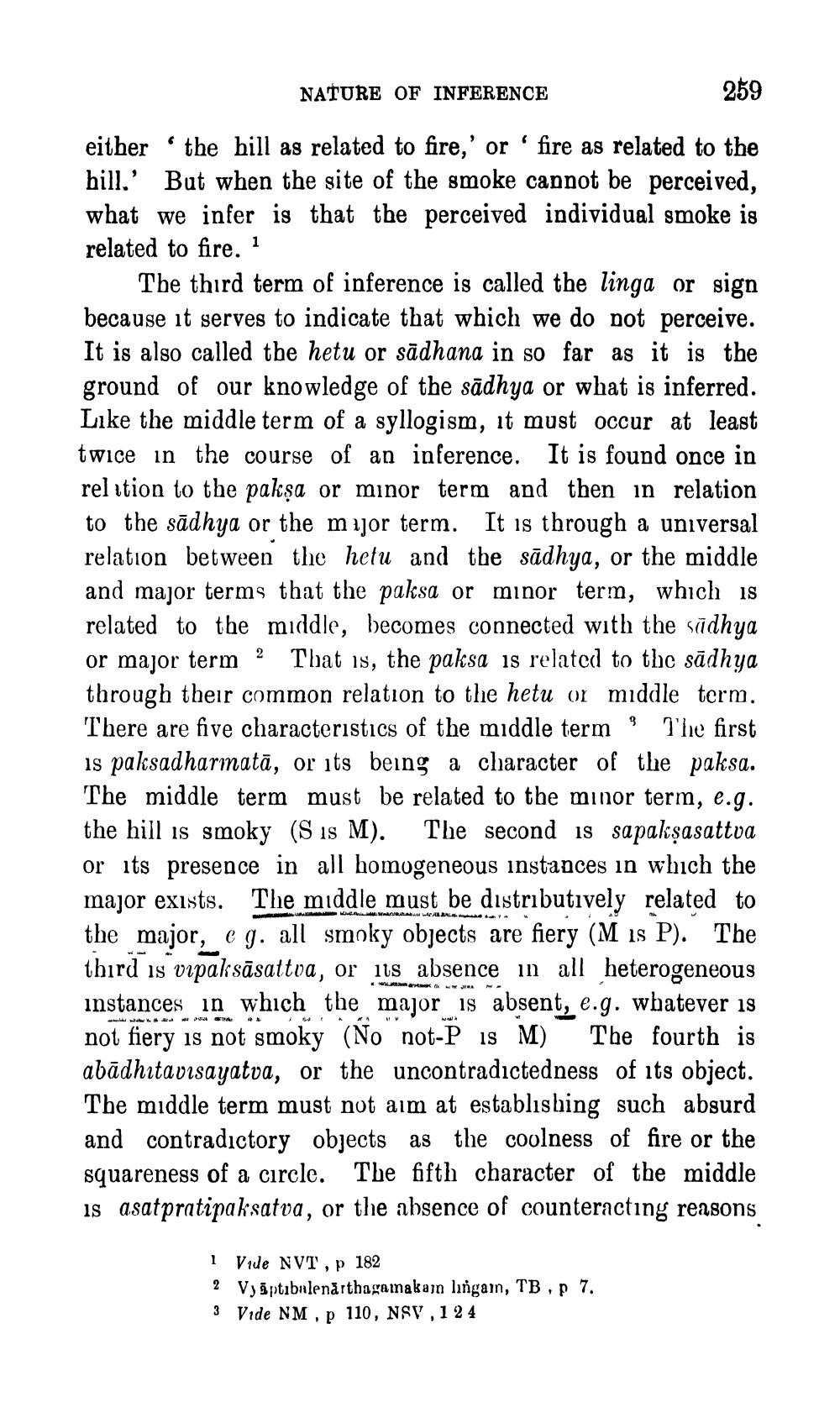________________
NATURE OF INFERENCE
259
either the hill as related to fire,' or 'fire as related to the hill.' But when the site of the smoke cannot be perceived, what we infer is that the perceived individual smoke is related to fire. 1
The third term of inference is called the linga or sign because it serves to indicate that which we do not perceive. It is also called the hetu or sādhana in so far as it is the ground of our knowledge of the sādhya or what is inferred. Like the middle term of a syllogism, it must occur at least twice in the course of an inference. It is found once in relition to the pakṣa or minor term and then in relation to the sādhya or the major term. It is through a universal relation between the hetu and the sādhya, or the middle and major terms that the paksa or minor term, which is related to the middle, becomes connected with the sūdhya or major term ? That is, the paksa is related to the sādhya through their common relation to the hetu or middle term. There are five characteristics of the middle term ? The first is paksadharmatā, or its being a character of the paksa. The middle term must be related to the minor term, e.g. the hill is smoky (S is M). The second is sapakşasattva or its presence in all homogeneous instances in which the major exists. The middle must be distributively related to the major, cg. all smoky objects are fiery (M is P). The third is vipaksāsattva, or its absence in all heterogeneous instances in which the major is absent, e.g. whatever is not fiery is not smoky (No not-P is M) The fourth is abādhıtavisayatva, or the uncontradictedness of its object. The middle term must not aim at establishing such absurd and contradictory objects as the coolness of fire or the squareness of a circle. The fifth character of the middle is asatpratipaksatva, or the absence of counteracting reasons
I Vide NVT, p 182 2 Vyiptıbalenārthagamnakan lingam, TB, p 7. 3 Vide NM, p 110, NSV ,124




